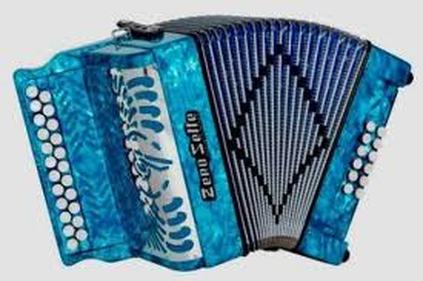The trikitixa
|
The trikiti, or trikitixa in dialctal Basque, is a two-row Basque diatonic button accordeon. The instrument has twelve unisonoric bass buttons. Each row at the treble side has two buttons of accidental notes, the sharps and flats, where just one button is normal. The notes belong to the central and high octave and are the notes missing from the chromatic scale. The instrument is great for folk music in 2 or 3 major or minor keys. But it is almost impossible to play other, more complexe music on it. For the layout of the melody side and the basses: click here
The trikiti was already used inBiscay at the end of the 19th century, but it is unknown how it got there. Some sources do say that it was imported to the Basque country from Italy through the port of Bilbao. Other sources suggest that it was brought in by Italian or French railway workers from the Alps. The name trikiti originally referred to an instrumental group made up of traditional basque instruments, together with an accordeon. |
The trikitixa together with the tambourine became a popular duo and it was adopted to perform on local and popular festivities, though the Catholic church did call the trikiti "hell's bellows" as its dance-inciting and its lively music led the Basque youth into temptation
|
The playing pattern remained unchanged untill up to the 1980s, when Kepa Junkera and Joseba Tapia started to develop new ways of playing the instrument. Though there was a lot of criticism for their novelties, they became key figures of the trikiti accordeon.
Currently a traditional style ensemble consists of a trikitixa, a tambouringe and voice. The players typically use a highly ornamented and swift style, along with staccato triplets. sources: http://en.wikipedia.org/wiki/Trikiti http://www.rootsworld.com/freereed/trikitixa.html http://atzarin.com/eng/atzarineng/trikitixa.html |


